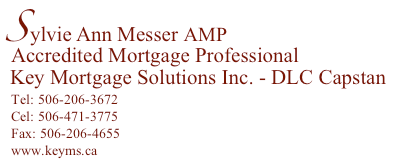IRD-Mortgage-PenaltyThe much-unloved Interest rate differential (IRD) penalty is a mystery to most of the natural born population.
People loathe it, largely because they don't understand it. We continually come across folks who read their entire mortgage contract and are still confused by the IRD calculation.
Fortunately, federal disclosure guidelines are on their way later this year. These guidelines are supposed to standardize the explanations of IRD penalties to make them more comprehensible.
There is one element of the IRD calculation, in particular, that gets people all tied in knots. It's called the "comparison rate."
Here's a real-life example of how the comparison rate can spoil your day: Customer fee to pay out mortgage doubles (CBC News).
The story features a regular guy (Mohsen Movahed) who learned how to calculate an IRD penalty...the hard way.
It seems Movahed relied on a penalty quote, only to find some months later that his penalty had doubled.
The culprit, says his bank, was the comparison rate used in the IRD calculation.
Comparison-Rate-IRD-PenaltyA comparison rate is the rate a lender compares to your current contract rate in order to calculate the IRD penalty on a fixed-rate mortgage.
The comparison rate is usually the lender's rate for the term that most closely matches your remaining term.
For example, if you have 22 months remaining on your fixed mortgage, a lender will typically (there are exceptions) use a 2-year term as your comparison rate.
The kicker is that banks often subtract the discount you received at origination from their posted (comparison) rate--which makes the interest rate differential and penalty even worse!
Some lenders use bond yields for their comparison rates (example). This method can sometimes be far more costly depending on yields and mortgage spreads.
Conversely, some non-bank lenders use regular discounted rates for their IRD calculations, which can be more favourable for the customer.
In any case, Mr. Movahed discovered that the comparison rate can drop considerably as time goes by. That drop can boost the interest rate differential and cost you thousands more.
As a sample test, we ran a quick penalty calculation for breaking a hypothetical $250,000 mortgage. Our example was based on actual historical and current bank rates. It assumed the customer had about 2.5 years remaining on their term and had received a 1.50% discount off posted rates.
Depending on the effective date of the penalty calculation, a bank could quote the penalty based on either a 2-year or 3-year comparison rate. That's relevant because the penalty difference between these two comparison rates (as of today March 24, 2011) is more than $3,700!
In other words, if our hypothetical customer waited until she had slightly less than 2.5 years remaining in her term, the bank could apply the lower 2-year comparison rate (instead of a 3-year) and her penalty would increase 28%. (A lower comparison rate makes the IRD bigger.)
The moral is that timing matters when calculating an IRD penalty. A good mortgage advisor can help you plan properly to minimize the IRD, if and when you have to pay it.


